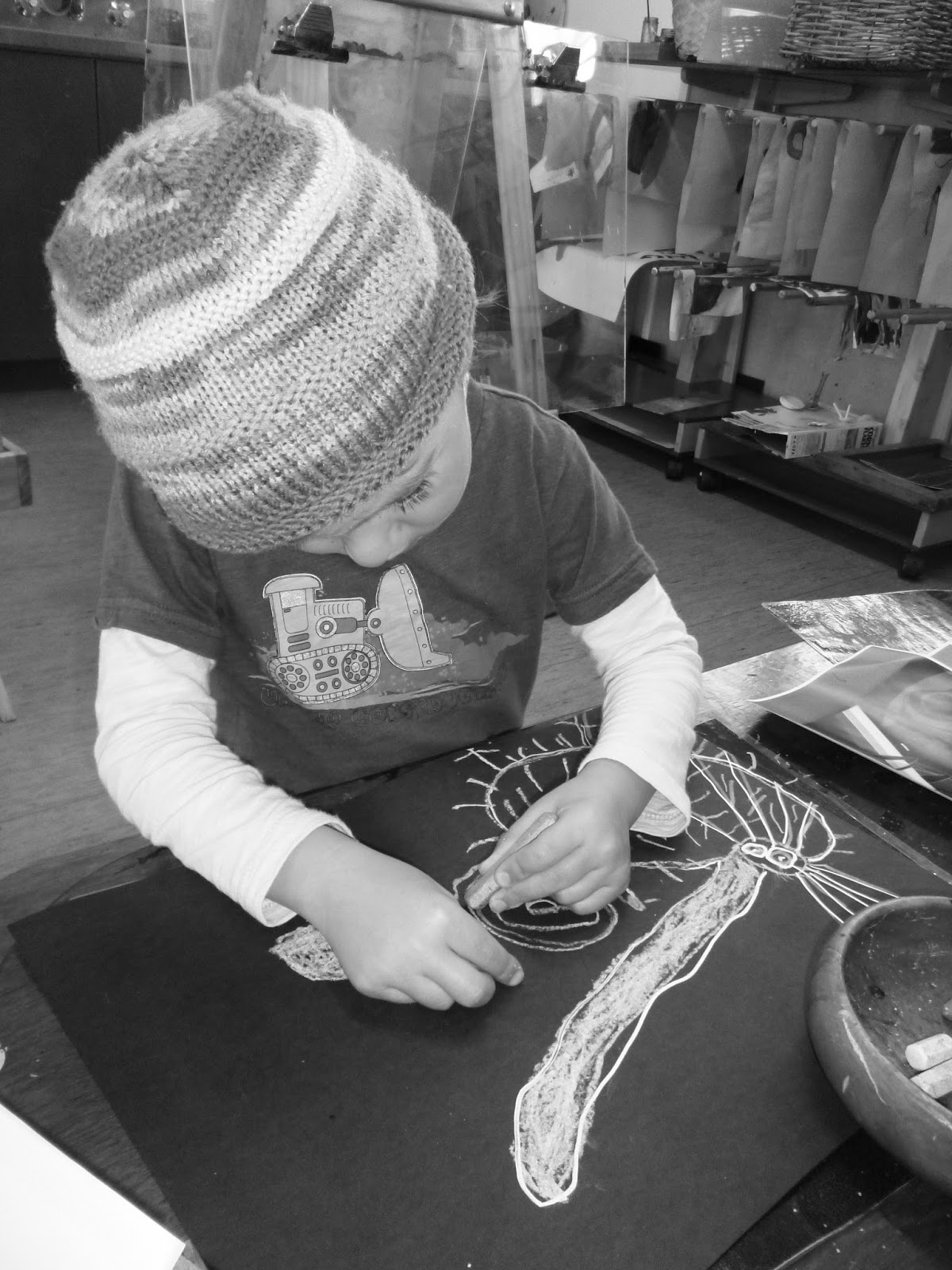Some of our children were very inspired when Kim
read this great book called ‘KIWI, the real story’ by local author Annemarie
Florian and illustrated by local artist Heather Hunt.
They wanted to represent a little bit about what
they knew about kiwi’s through their drawings. Pictures from this book were
used as provocations and as they drew, their language around what they knew and
what they wanted to share just flowed. This is what we often refer to as observational drawing.
“Drawing is
the backbone of almost every art discipline and a fundamental form of
communication. This makes the ability to translate what the eye sees onto paper
a valuable skill for all artists.
Before one can toss aside convention and
explore the abstract and the fantastic the original form and realistic
representation must be understood. Observational drawing is the way to exercise
the connection between what the eyes see and what ends up on paper or canvas.
It requires focus as well as attention to detail and the ability to find
relationships. The relationship of one object to another and
the relationship of those objects in space.
The practice of observational drawing will
improve concentration, drawing skill and your overall ability to see the world
around you.” (Kunstler)
The children all shared their thoughts and
ideas around what they knew about kiwi’s.
“I know how
to say the noise a kiwi makes – key key key key! They hunt for food, bugs and
ants. Kiwi’s are scared from dogs because they kill them. I love kiwi’s because
they lay eggs and their beautiful feathers and their beautiful claws and their
beautiful beak.” (Liliana)
“Kiwi live
in a bush and then they eat bugs and then they want to go to their dads and
then they want to go to their mums. I love kiwi’s because they don’t bite me.” (Kate
B.)
“They live
in the bush every day and come out at night time and they play. Kiwi’s like to
eat bugs. They are afraid of scary sharks and monsters too.” (Kate G.)
“Kiwi’s live
in the bush and they eat bugs. Dogs and cats and rats worry kiwi’s because they
might bite them.” (Jaimee)
“Kiwi’s live
in a burrow and they come out at night. They look for food. Dogs scare kiwi’s
and cats and rats scare them too cause they can eat their eggs. Dogs kill the
kiwi’s. I am making an egg and this is a nest with lots of sticks. I drawed my
kiwi and a snail because the kiwi likes to eat the snail” (Lucas)
“Kiwi’s live
in the woods and they find bugs. They sit on their eggs for 15 minutes. They
then might be cracked and the babies will come out.” (Emma)
“This is a
kiwi eating a bug. Kiwi’s live in the grass. They say ‘Brrr brrr brrr’.” (Chamodhi)
“Kiwi’s live
in the bush and them eat bugs. Kiwi’s like hiding and playing hide and seek.” (Hori)
After creating
these first kiwi masterpieces the idea of making a clay kiwi was introduced and
many of the children jumped on board with this notion. When working with the
clay we talked about the shapes that we needed to make to create our kiwi. The
children involved really enjoyed this tactile experience, seeing their ideas
and knowledge of the kiwi come to life in 3D form and the end result was such a
wonderful little clay bird.
“Clay work can be a language for exploring and communicating
ideas. Like drawing, clay work enables children to make their ideas visible –
but in three dimensions” (Koble)
On a later occasion some of the children also drew another great
picture of a kiwi using black vivid on white paper with a bit of coloured
pencil. This was very effective and they were very proud of their pictures.
Their interest in these
iconic native birds carried on for quite a few days and on a few occasions I have
heard the children sharing their knowledge of kiwi’s with others. This interest
flowed on to the teachers reading other stories about kiwi and from this many
more children had the opportunity to learn about them.
It so lovely that this interested was sparked when reading a story
book by a local author and a local artist. We have some very talented people
among us in Northland and in this case they have created a fantastic learning
opportunity for a wide group of children in our Kindergarten.
Pai te mahitahi – good sharing!
Zair


























No comments:
Post a Comment